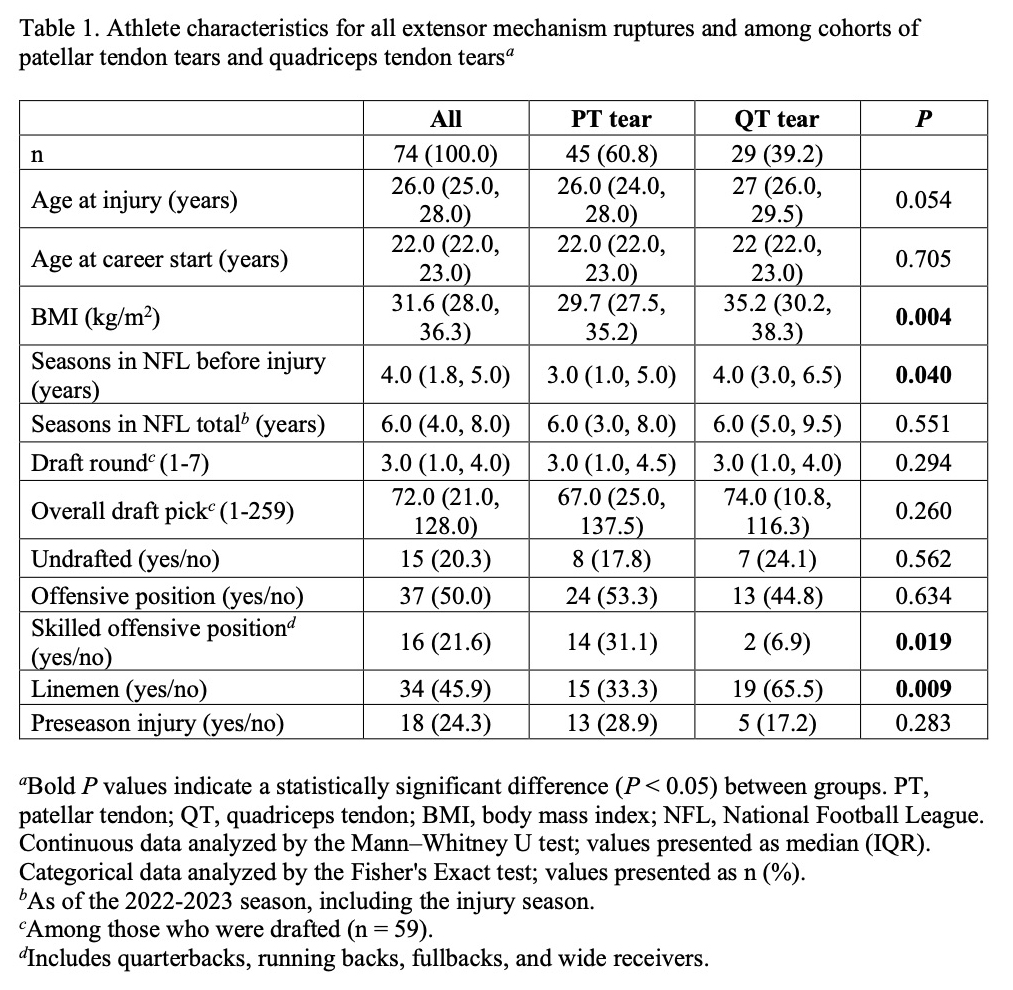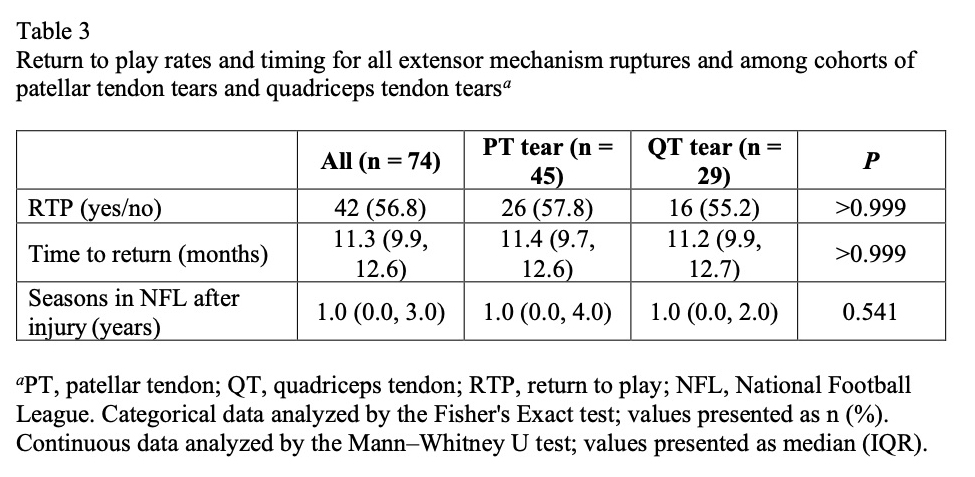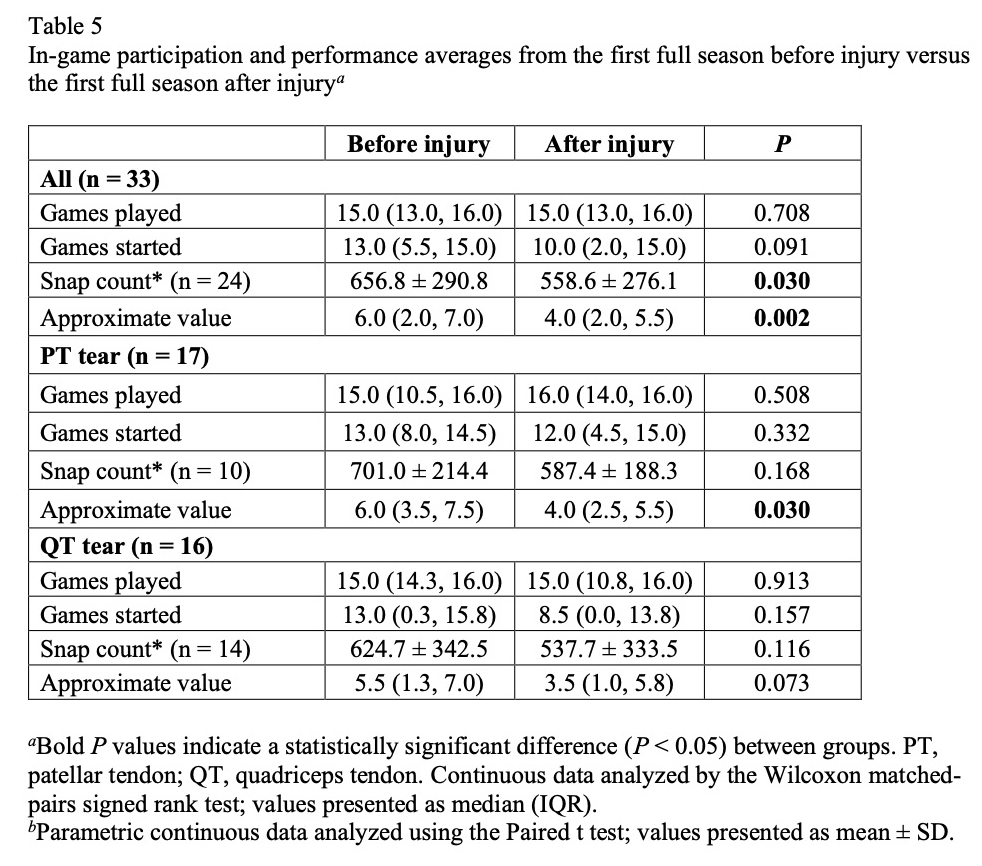1Choudhry H, 2Eaddy S, 3Padua F, 4Pacewicz A, 3Skrobot G, 3Falbo R, 3Miller R, 3Levine J
1Mercy Health St. Vincent Medical Center, Toledo, OH, United states; 2Mercy Health St. Vincent Medical Center, Toledo, OH, Toledo, OH, United states; 3undefined, undefined, OH, Undefined; 4Oberlin College, Oberlin, OH, United states
Introduction
Extensor mechanism ruptures are career-threatening injuries for professional athletes, especially in the National Football League (NFL). Despite prior research on this population, the overall RTP percentage and the factors influencing extensor mechanism injuries in NFL players remain poorly defined. The purpose of this study was to determine the overall return to play (RTP) rate after extensor mechanism ruptures in the NFL, assess performance metrics before and after injury, and identify factors associated with injury and return.
Methods
A search of all available patellar tendon (PT) and quadriceps tendon (QT) tears in NFL history was performed using an established NFL injury database. Demographic and player performance data were compared to assess for factors influencing the occurrence of either injury type and overall return to play. Among players that returned, average performance data was compared at one and two full seasons before and after injury.
Results
The overall RTP rate after extensor mechanism ruptures was 56.8% with a median time to return of 11.3 months. No differences in RTP rates or timing were observed between PT and QT tears. Higher BMI, lineman positions, and longer pre-injury careers were significantly correlated with QT tears. Preseason injuries were associated with significantly lower RTP rates. Overall, athletes who returned played significantly fewer snaps and had lower approximate value in the first full season after return compared to one season before injury, with reductions in approximate value persisting into the second season after injury. PT tears were associated with worse deficits in approximate value at one season after injury compared to QT tears.
Conclusion
Extensor mechanism ruptures in NFL athletes are associated with a low rate of return to play and an extensive recovery period. Athletes and staff should expect reductions in game play and performance in the first season after return, with worse performance deficits after PT tears compared to QT tears. This study highlights the challenges that professional athletes face in resuming play after extensor mechanism ruptures, emphasizing the need for improved prevention and rehabilitation measures tailored to these career-threatening injuries.






